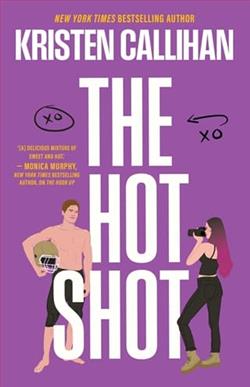Page 12 of Sick of You
“Just dropped dead. I guess it’d been sick or something, my sister said.”
This was the clue we’d been waiting for. “Okay, Mr. Ordóñez, with your permission, I’d like to do a quick physical exam.”
“I’m not going anywhere.” He laughed huskily, and I joined in, disinfecting my hands and donning gloves before examining the claw marks on the back of his shoulder.
“Looks like that was painful.”
“You should see the other guy.”
I asked to examine his lymph nodes and Mr. Ordóñez agreed. With an audience, I was extra careful to protect his dignity. “Does the cat live outside? Or did it, I guess?”
“As far as I know. I wasn’t going in that guy’s house.”
“Was it vaccinated against rabies?”
The patient’s eyes went wide. “You think it’s rabies?”
I tried to reassure him with a smile—again, stressing my patients out was counterproductive. “I’m trying to rule out rabies.”
“I don’t know if it had its shots.”
“How about you?” I finished the physical examination and pulled his blankets back into place, shedding my gloves. “Are your tetanus shots up to date?”
“I don’t know.”
“We’d better check your blood titers.” I made a quick note on my tablet, and then made sure to make eye contact with Mr. Ordóñez. “I’d like to test for tularemia. I’m guessing we can’t get ahold of a sample from the cat?”
He merely laughed.
“Like I said, we need to run some tests and cultures, but if that turns out to be right, we’ll get you on mild antibiotics and get you feeling better.” I paused. “It would be best to vaccinate you against rabies as well, just in case.”
Mr. Ordóñez sighed, like his whole chest was deflating. “Doesn’t that hurt?”
“Rabies vaccines aren’t given in the stomach these days—it’s like a flu shot. Or a series of five flu shots over the next two weeks.”
“Oh.” He seemed relieved, the tension leaving his forehead.
From the corner of my eye, I saw Dr. Donaldson direct the residents into the hallway, probably taking the opportunity to teach more about tularemia, which wasn’t something you saw every day. I finished up with Mr. Ordóñez before I joined them in the hallway. “I think Dr. Judd said he wanted to see you in the lab,” I told the residents. Two of them still hadn’t memorized where the lab was after nearly ten months here, but I tried to be patient as I repeated the directions for what had to be the fourth time.
Once they were on their way, I blew out a breath. Away from my patient’s side, it felt like the mountain of missed work avalanched onto my shoulders. “I didn’t expect to be this far behind for missing two days of work.”
Dr. Donaldson’s expression approximated a smile. “You’re doing great.”
“Feels like I’ll never catch up,” I muttered.
Dr. Donaldson seemed to disagree. “You’re the most productive fellow we have.”
I dismissed the praise, but he persisted: “In the last three years, you’ve run a voter registration drive, organized a medical research trip to Congo, and contributed to three of my papers. That pace is unparalleled. Missing two days of work hardly seems like a more formidable challenge.”
“Well, thank you.” I still didn’t know what to do when someone listed my accomplishments—but I also didn’t know how to slow down. “Do you think we have time for me to work on my notes before that meeting?”
He checked his watch and I did the same. Half an hour until we met for the task force—and, as we’d discovered this morning, with the Pennsylvania Department of Health. “You might be able to start,” he said.
We headed up the stairs to ID. Though the stairs were out of the way, Dr. Donaldson never took that death trap of an elevator if he could help it, and I couldn’t disagree. That thing was scary.
I still wasn’t clear why I was supposed to go to this meeting, but if Dr. Donaldson had made the time to invite me, I assumed it was best if I attended. As long as this didn’t take too much time out of my schedule.
We reached Critical Care via the shakiest and most worn elevator I’d ever personally seen, including my grandmother’s antique elevator that had a gate and an operator. Even Dr. Okafor seemed afraid of this death trap.















